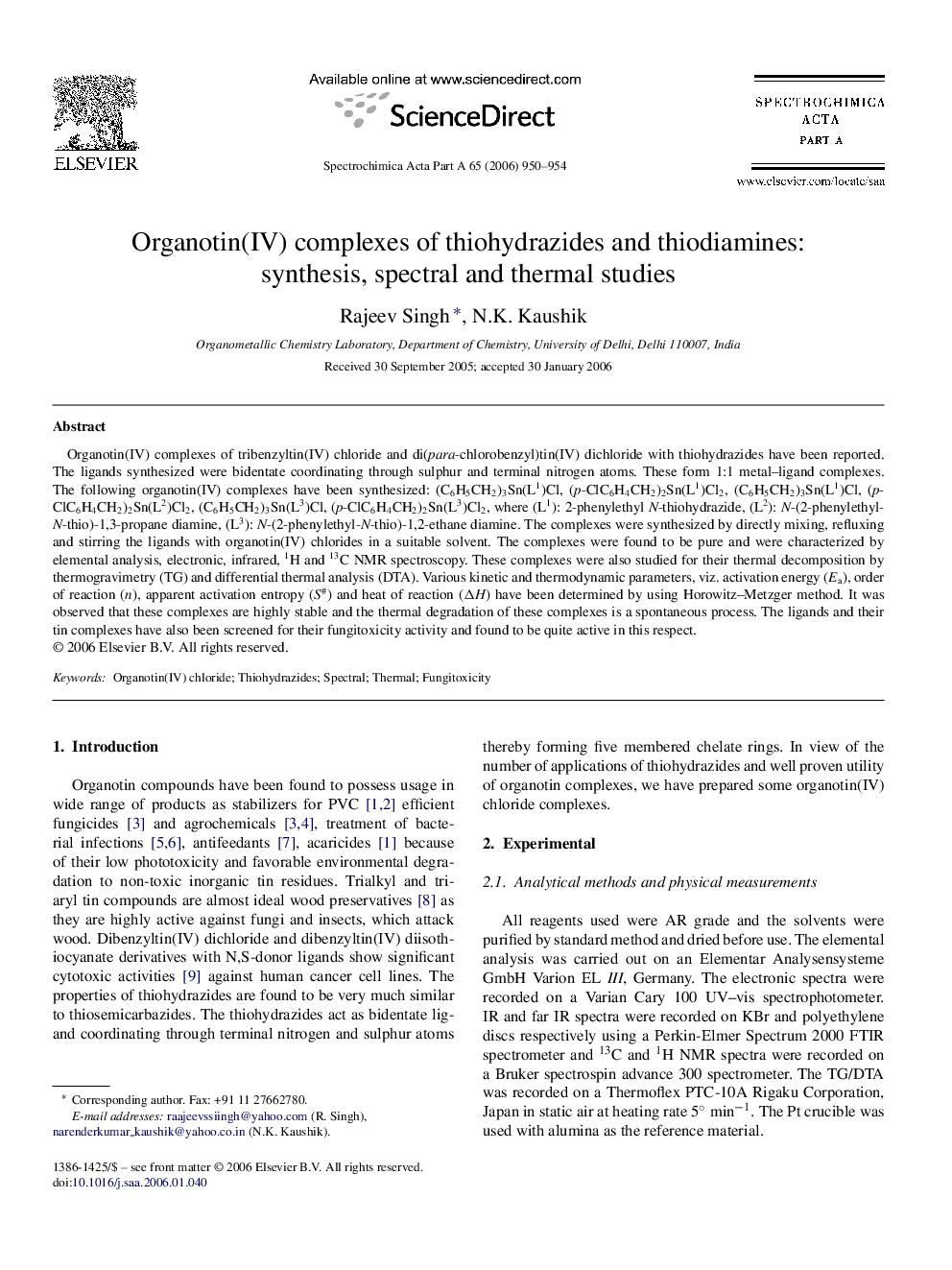| Article ID | Journal | Published Year | Pages | File Type |
|---|---|---|---|---|
| 1236345 | Spectrochimica Acta Part A: Molecular and Biomolecular Spectroscopy | 2006 | 5 Pages |
Organotin(IV) complexes of tribenzyltin(IV) chloride and di(para-chlorobenzyl)tin(IV) dichloride with thiohydrazides have been reported. The ligands synthesized were bidentate coordinating through sulphur and terminal nitrogen atoms. These form 1:1 metal–ligand complexes. The following organotin(IV) complexes have been synthesized: (C6H5CH2)3Sn(L1)Cl, (p-ClC6H4CH2)2Sn(L1)Cl2, (C6H5CH2)3Sn(L1)Cl, (p-ClC6H4CH2)2Sn(L2)Cl2, (C6H5CH2)3Sn(L3)Cl, (p-ClC6H4CH2)2Sn(L3)Cl2, where (L1): 2-phenylethyl N-thiohydrazide, (L2): N-(2-phenylethyl-N-thio)-1,3-propane diamine, (L3): N-(2-phenylethyl-N-thio)-1,2-ethane diamine. The complexes were synthesized by directly mixing, refluxing and stirring the ligands with organotin(IV) chlorides in a suitable solvent. The complexes were found to be pure and were characterized by elemental analysis, electronic, infrared, 1H and 13C NMR spectroscopy. These complexes were also studied for their thermal decomposition by thermogravimetry (TG) and differential thermal analysis (DTA). Various kinetic and thermodynamic parameters, viz. activation energy (Ea), order of reaction (n), apparent activation entropy (S#) and heat of reaction (ΔH) have been determined by using Horowitz–Metzger method. It was observed that these complexes are highly stable and the thermal degradation of these complexes is a spontaneous process. The ligands and their tin complexes have also been screened for their fungitoxicity activity and found to be quite active in this respect.
